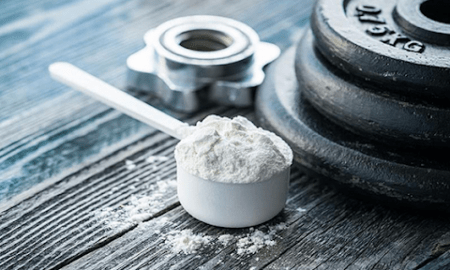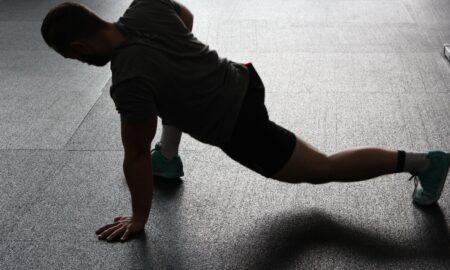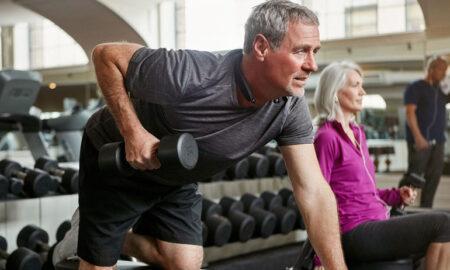

Muscle atrophy is a condition where the muscles shrink and degrade, making them less functional and eventually causing an individual to stop being able to perform daily tasks.
The loss of muscle mass and strength can be caused by several factors, including aging, certain genetic conditions, trauma, and surgery.
This problem is especially troublesome as it affects athletes, bodybuilders, the elderly, and people with injuries or limitations who have to sit around for long periods.
In this article, we will discuss how muscle atrophy affects the body muscles, associated risks, and treatments for muscle atrophy.
What is Muscle Atrophy
Muscle atrophy is the loss or wasting of muscle tissue. Natural factors, including aging, genetics, and unhealthy or nutrient deficiencies, can contribute to this condition.
You may also have muscle atrophy after an injury, illness, or any protracted period of inactivity. Below are a few examples of conditions that may cause or increase the risk for muscle atrophy:
- Polio
- Guillain-Barré syndrome
- Osteoarthritis
- Neuropathy
- Multiple Sclerosis
The most common cause of muscle atrophy is the disuse of your muscles for a prolonged period (disuse physiologic).
Atrophy is more common in older adults. This is because older persons are more likely to have the age-related muscle loss condition known as sarcopenia, which can accelerate faster after an injury or extended period of inactivity to atrophy muscles.
People suffering from this condition may experience mobility problems, discomfort, pain, balance issues, loss of muscle control, paralysis, tingling sensations in the arms and legs, vision abnormalities, and fatigue.
Some people with muscle atrophy may also struggle with speaking and swallowing and are more likely to experience depression due to these health issues. In extreme cases, muscle atrophy may can sudden weakness on one side of the body or face due to reduced muscle mass.
How can Atrophy Affect Your Muscle Progress?
Your bodily parts are moved by the contraction and relaxation of your muscles. Contractions shorten muscles, tugging the bones to which they are linked to move various limbs. Relaxation, on the other hand, returns to its original size to create stabilization for the joints.
When you experience muscle atrophy (losing muscle mass), your muscles weaken and shrink, making it difficult to move as much weight when working out or performing daily tasks.
An unhealthy and sufficient diet is also a common cause of muscle atrophy. If your body doesn’t get enough protein in your diet, especially if you’re trying to build muscle, it will start to break down the existing muscle tissue to meet its demand for protein. It can result in muscle loss and strength as well as a decrease in endurance performance.
Persons with muscle atrophy experience loss of muscle tissue. Lack of sufficient diet and other underlying health conditions makes the body conserve energy by breaking down the muscles, which causes them to decrease in size and strength. As a result, the function of muscles such as movement coordination and balance, endurance, and stabilization are hindered.
Another effect of this illness is the shrinking of muscle fibers due to the removal of organelles and contractile proteins, which are essential for muscular contraction and movement.

How to Bounce Back from Atrophy
Reversing muscle atrophy depends on the type of muscle atrophy you have. If you have disuse atrophy, you can change it with exercise and a healthy diet.
Your healthcare professional may recommend physical therapy or an exercise regimen. The exercises may include regular workouts in the pool to improve muscle strength and size and reduce your muscle workload.
There are also other exercises such as strength training, cardio workouts, and flexibility exercises you can still perform while wearing a splint or brace, even if you cannot actively move some joints in your body.
A better nutritional diet that may increase protein and calories can also alleviate disuse (physiologic) atrophy. Your doctor could suggest that you develop a healthy eating plan with the help of a dietician. For instance, consume plenty of fruits and vegetables and select foods that are high in protein and low in fat and carbohydrates.
To build your muscle mass, it’s also a good idea to have lean foods like chicken and fish. Additionally, your dietician could recommend dietary supplements.
Due to the physical harm done to your nerves, neurogenic atrophy often cannot be reversed.
Tips and Workouts That Enhance Muscle Growth
One of the most critical factors in enhancing your muscle growth is your exercise and the diet you take. There are several ways that you can improve muscle growth from muscle atrophy. They include:
Increase Your Protein Intake
The rule of thumb is to consume at least 1 gram of protein per pound of body weight per day to enhance and maintain muscle growth. You can accomplish this through various foods, including lean meat and fish, dairy products, eggs, legumes (beans and peas), and nuts. Getting adequate amounts of vitamin B12 found in fortified foods such as cereals and iron is also essential.
Get Enough of Sleep
Sleep deprivation can cause muscle atrophy and reduce strength and performance, so ensure you get enough shut-eye each night. Sleeping less than seven hours a night is associated with significantly higher cortisol levels, leading to muscle loss.
Ensure you get enough sleep every night so your body does not have time to break down muscle tissue during sleep hours.
Reduce Stress
Stress hormones can wreak havoc on your metabolism and increase cortisol levels — the “stress” hormone — which breaks down muscle tissue and makes it easier for fat to accumulate around the midsection.
So try relaxation exercises like meditation or yoga to lower stress levels and reduce cortisol levels by as much as 25 percent after just 15 minutes of practice daily for four months!
Drink Plenty of Water
Strength training can cause water loss while working out, hindering muscle recovery. Thus, if you don’t drink water to replace water lost through sweat during sweating, you will not be able to enhance your muscle mass.
Drinking water during and after training keeps you not only keep you hydrated and hunger away by making you feel fuller.

Workouts to Enhance Muscle Growth from Atrophy
Working out regularly is the best way to increase muscle size and strength. If you don’t have time for a full-body workout at the gym, try doing more specific exercises at home. These workouts will help you build lean muscle mass while keeping your body fat low. The exercises are:
Resistance and Weight Training Exercise
The best exercises for growing muscle are resistance and weight training. Furthermore, this exercise promotes bone mass, another critical factor in maintaining mobility as you age. Start with a more straightforward exercise like stretch band exercises, water aerobics, or light dumbbells before gradually increasing the weight and repetitions.
Compound Exercises
Compound exercises use multiple muscles and joints to accomplish a single movement. These movements help you develop the kind of strength that is necessary for building muscle mass and strength.
Compound exercises are also better for your body than isolation exercises because they allow you to work more muscles at once, making them more effective at building muscle mass. The best types of compound exercises include:
- Barbell bench press and barbell row
- Chest press and dumbbell flyes
- Leg press and lunges with dumbbells or kettlebells.
- Push-ups and chin-ups
- Squats, lunges, and deadlifts
- Bent over rows and lateral raises
- Bench press and shoulder press
Foods to Stimulate and Promote Muscle Growth
Some foods can promote muscle growth by providing the body with the nutrients it needs to build muscles, while others have amino acids that promote muscle growth by helping repair damaged muscle tissue and build new muscle tissue. They include:
Eggs
Eggs are a great source of protein, which helps build and repair muscle tissue. They’re also loaded with vitamins, minerals, and antioxidants. The yolk contains fat-soluble vitamins A, D, and E, as well as choline, lutein, and zeaxanthin — all of which promote muscle gains.
Chicken Breast
Chicken breast is an excellent source of protein with only 26.7 grams per 3-ounce (85 grams) serving. Chicken is also rich in B vitamins which help promote muscle growth and repair.
Salmon
Salmon contains protein and omega-3 fatty acids, which can help you build muscle mass. Salmon is also high in vitamin D, which helps to build and repair muscles.
In addition to these benefits, salmon contains vitamin B12, which can help you recover from strenuous exercise. Vitamin B12 also plays a role in forming red blood cells, which carry oxygen to your muscles.
Dairy Products
Dairy products are one of the best ways to help build muscle because they contain proteins, carbohydrates, and fats, which are thought to be good for muscle growth. Milk also has calcium, which helps build and repair muscle tissue and vitamin D, increasing strength and lean body mass.
There are many dairy products, but milk and cheese are the two most important for building muscle. Cheese provides even more nutrients than other dairy products because it’s fortified with additional vitamins and minerals.
However, it’s crucial to choose the right kind of cheese: low-fat varieties can still be beneficial if you eat them with other healthy foods like fruits or vegetables.
Also, eat dairy products in moderation since they’re high in fat and calories. There are plenty of alternatives if you have lactose intolerance or are allergic to milk or other dairy products. Check out our list of the best plant-based milk.
Beans
Beans are one of the best foods for muscle growth because they contain protein and fiber. Protein is a crucial component of muscle tissue and can help build new muscles and repair existing muscle fibers. Beans also contain iron, magnesium, selenium, zinc, and other vitamins and minerals that help repair damaged tissue.
Protein powders
Protein powders can help you build muscle, but they are not a replacement for eating protein-rich foods like chicken, beef, fish, and eggs.
Protein powders are pure protein sources stripped of fat and other nutrients. You can add it to your daily diet or use it as a supplement after a workout to help repair damaged muscles.
Protein powders come in many different forms. Some protein powder you can use include:
- Creatine Monohydrate
- Glutamine
- Soy, whey

Treatment for Muscle Atrophy
The treatments for muscle atrophy depend on the cause of muscle atrophy and its severity of it. The treatments for muscle atrophy are:
Lifestyle Changes
Lifestyle changes that can help to prevent muscle atrophy include a healthy diet, regular exercise, and maintaining a healthy body weight. Eat a diet rich in protein, low fats, and calories.
Eating lean meats such as chicken and turkey and getting enough vitamins and minerals from fruits, vegetables, grains and cereals, legumes, and other sources such as supplements is crucial.
Working out regularly will help you build muscle mass and increase bone density, which helps treat muscle atrophy. Begin gradually with simple exercises like walking or swimming if you haven’t exercised in a while or if you have joint problems.
If you have health problems that limit your ability to exercise safely, talk with your doctor before starting any exercise program.
Physical Therapy
Physical therapy exercises are the primary treatment option for muscle atrophy. These exercises prevent immobility and increase the size and strength of your muscles while stimulating circulation to various body parts.
A physical therapist will help you design an exercise program that targets the specific muscles that are weak or have lost function due to muscle atrophy.
Functional Electrical Stimulation
This treatment is used to restore motion and strength to muscles that have lost their ability to contract due to nerve damage.
The treatment of functional electrical stimulation is administered by putting electrodes on weaker muscles or joints to generate electrical pulses that stimulate them.
The electrical current generated by the electrodes causes muscle contraction movement, assisting patients in improving their life.
Surgery
In severe cases, muscular atrophy recovery needs surgery. Patients with injuries and neurological disorders are advised to undergo these medical procedures. Malnourished patients can also get surgery to decrease the effects of muscular degradation.
Conclusion
Muscle atrophy is a dangerous disease that impairs mobility, coordination, eyesight, and sensation. Luckily, several treatments are available, such as lifestyle adjustments, physical therapy, functional electrical stimulation, and surgery.
See a physician immediately for an accurate diagnosis and personalized treatment plan if you have muscle weakness, exhaustion, tingling sensation in your arms or difficulty speaking or swallowing.






















You must be logged in to post a comment Login